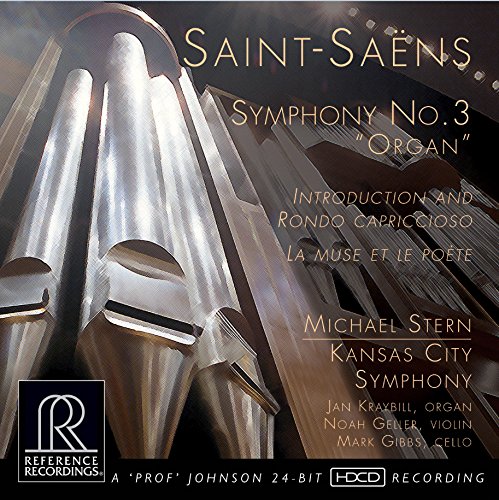 Reich: Music for 18 Musicians Ensemble Signal/Brad Lubman (Harmonia Mundi)
Reich: Music for 18 Musicians Ensemble Signal/Brad Lubman (Harmonia Mundi)
Playing Steve Reich's music demands incredible precision and accuracy. You wonder whether the ideal Reich recording could be realised in a studio, using sequencers, samplers and loops. The intent would be missing, of course, and this fantastic new account of Music for 18 Musicians demonstrates just how much performers can bring to a score. This is the best performance of a Reich piece I've heard. It sparkles and glitters. The different instrumental strands are brilliantly delineated. Harmonia Mundi's sleeve art is based on Reich's seating plan – listen to this recording through headphones and you can tell how carefully Brad Lubman's Ensemble Signal have matched it. Most importantly, this performance breathes. It ebbs. It flows. You can tell that these players are looking at one another, grinning, sweating, and counting crazily. And revelling in the sheer joy of communal music making.
Ashley Capps' sleeve note makes the case for this work as a genuine masterpiece, one where Reich strips music down to its primary components, “restoring its heartbeat and soul... an exultation and celebration of the very essence of what it means to be a human being.” So much springs from such modest means. Reich's sequence of chords are the springboard for 12 short sections, the “Pulses” of the opening returning to frame the work. Bass clarinets chug. Xylophones and three percussive pianos chime. Repeated listening lets one appreciate just how delicious this performance is – my favourite moment being the bell-like vibraphone motif just before the maracas enter in “Section VIII”. Wonderfully vivid sound quality – this disc needs to be appreciated in a single, hour-long sitting. Minimalist naysayers should dive in.
 Saint-Saëns: Symphony No. 3, Introduction and Rondo Capriccioso, La Muse et le Poéte Kansas City Symphony/Michael Stern, with Noah Geller (violin), Mark Gibbs (cello), Jan Kraybill (organ) (Reference Recordings)
Saint-Saëns: Symphony No. 3, Introduction and Rondo Capriccioso, La Muse et le Poéte Kansas City Symphony/Michael Stern, with Noah Geller (violin), Mark Gibbs (cello), Jan Kraybill (organ) (Reference Recordings)
Saint-Saëns's La Muse et le Poéte is the rarity here, a 15-minute piece for violin, cello and orchestra. A mixture of symphonic poem and concerto, it's a real find. Muse and poet are represented by rhapsodic violin solo and an earthier cello, and the two voices slowly find a way to work together. It's impeccably structured, brilliantly orchestrated and highly melodic. Its brevity make it an awkward work to programme, and it must have seemed impossibly old-fashioned when composed in 1910. Saint-Saëns's music sounds defiantly 19th century, and it's no surprise to learn that he was baffled by Stravinsky and Debussy. Noah Geller's performance of the better known Introduction and Rondo Capriccioso is excellent, aided by pin-sharp backing from Michael Stern's Kansas City Symphony. The recorded balance is impeccable, the soloist ideally clear but never overbearing.
The most satisfying recordings of Saint-Saëns's Symphony No. 3 are those made with organ and orchestra actually in the same place. There's a famously beefy version conducted by Barenboim, where the organ of Notre Dame is superimposed on the Chicago Symphony, but it feels wrong – the organ should be part of the orchestral texture. This symphony is a much smarter piece than it's often given credit for. Saint-Saëns's transitions work so well – the Allegro moderato's winding down is a great moment, and the scherzo's thinning out before the organ entry is magical. I love this performance's athleticism; rhythms are delectably pointed and there's no indulgence. Woodwind and brass tonguing is effortless. The Poco adagio's theme smoulders, and the piano duet's entry is appropriately witty. Jan Kraybill's modern organ sounds suitably resplendent but she knows that the colours are more interesting than decibels. This is still a sonic spectacular though, and Saint-Saëns's coda, where the music seems to accelerate whilst metrically slowing down, is terrific. Highly recommended.
 Latina Cristina Pato (Sunnyside)
Latina Cristina Pato (Sunnyside)
The mere mention of bagpipes will give some listeners the heebie-jeebies, but phobics will love this disc. Spanish-born Cristina Pato is a leading gaita (Galician bagpipes) player. She moved to New York to continue her classical piano studies, and plays both instruments here, backed by bass, drums and accordion. The gaita's chanter has a sharp bright tone; its drones are soft and reedy. In Pato's hands the instrument is disconcertingly agile. She's also able to bend the notes, giving some of the melodies here a very vocal quality. Bass player Edward Perez's The Latina 6/8 Suite fills most of this disc, an engaging suite which plays with different Italian, Latin American and Spanish 6/8 rhythms. In Pato's words: “The word Latina comes from Latin, which originated in Italy. From Sicily came the tarantella, which is so closely related to the Galician muiñeira.”
The mixture of styles and influences hangs together nicely, though the more striking numbers are the rawer, less polished ones. Like the “Muiñeira de Chantada”, its twisty melody dancing over a single drone note, initially accompanied by what sounds like stamping feet and an unhinged roar from Pato. Or the brilliant “María Lando” with its stark, spare opening, and Pato's daringly slow upward glissando near the close. There's also an infectious number by Argentinian composer Emilio Solla and an accordion-drenched dance by Victor Prieto.















Add comment